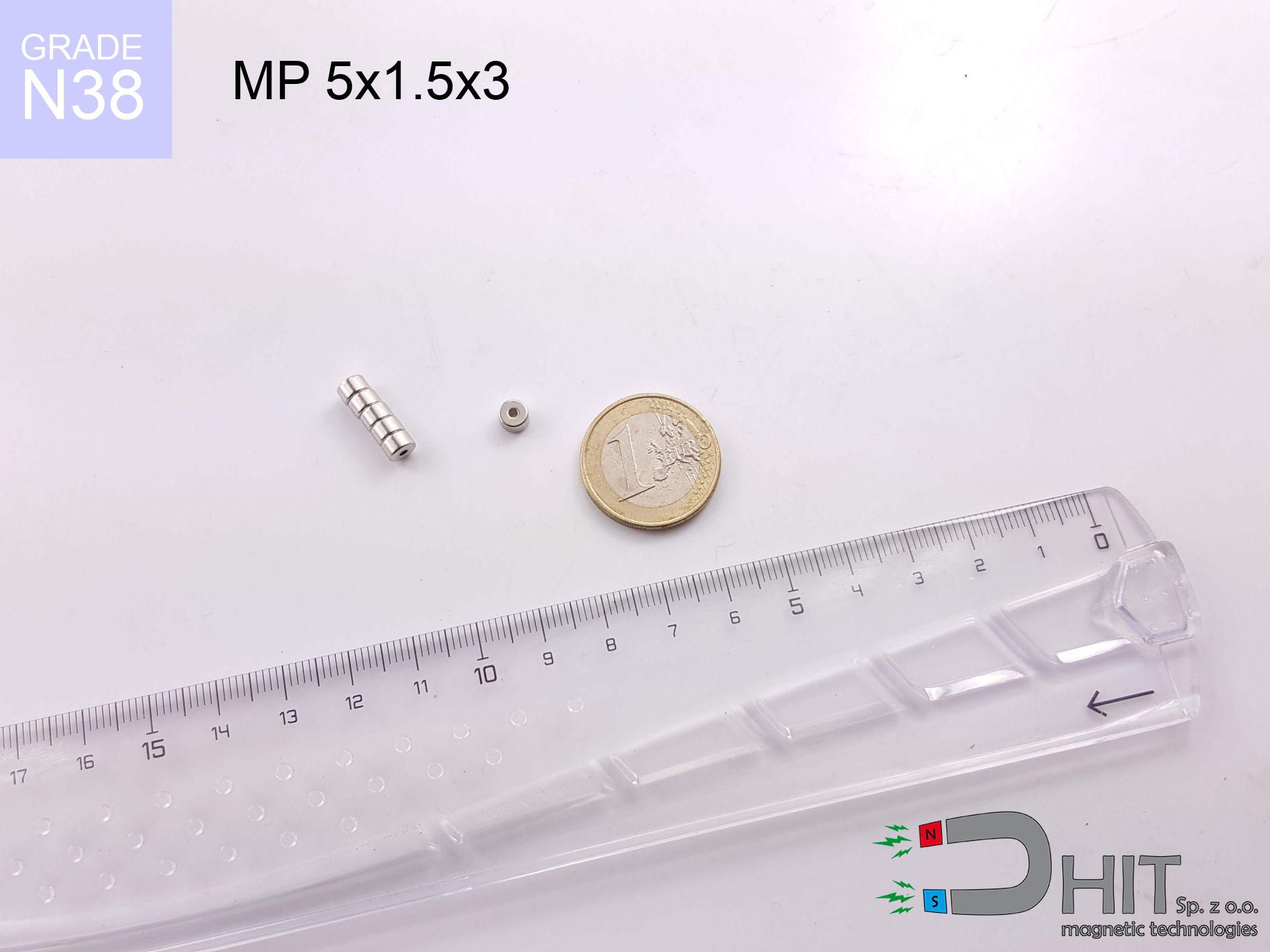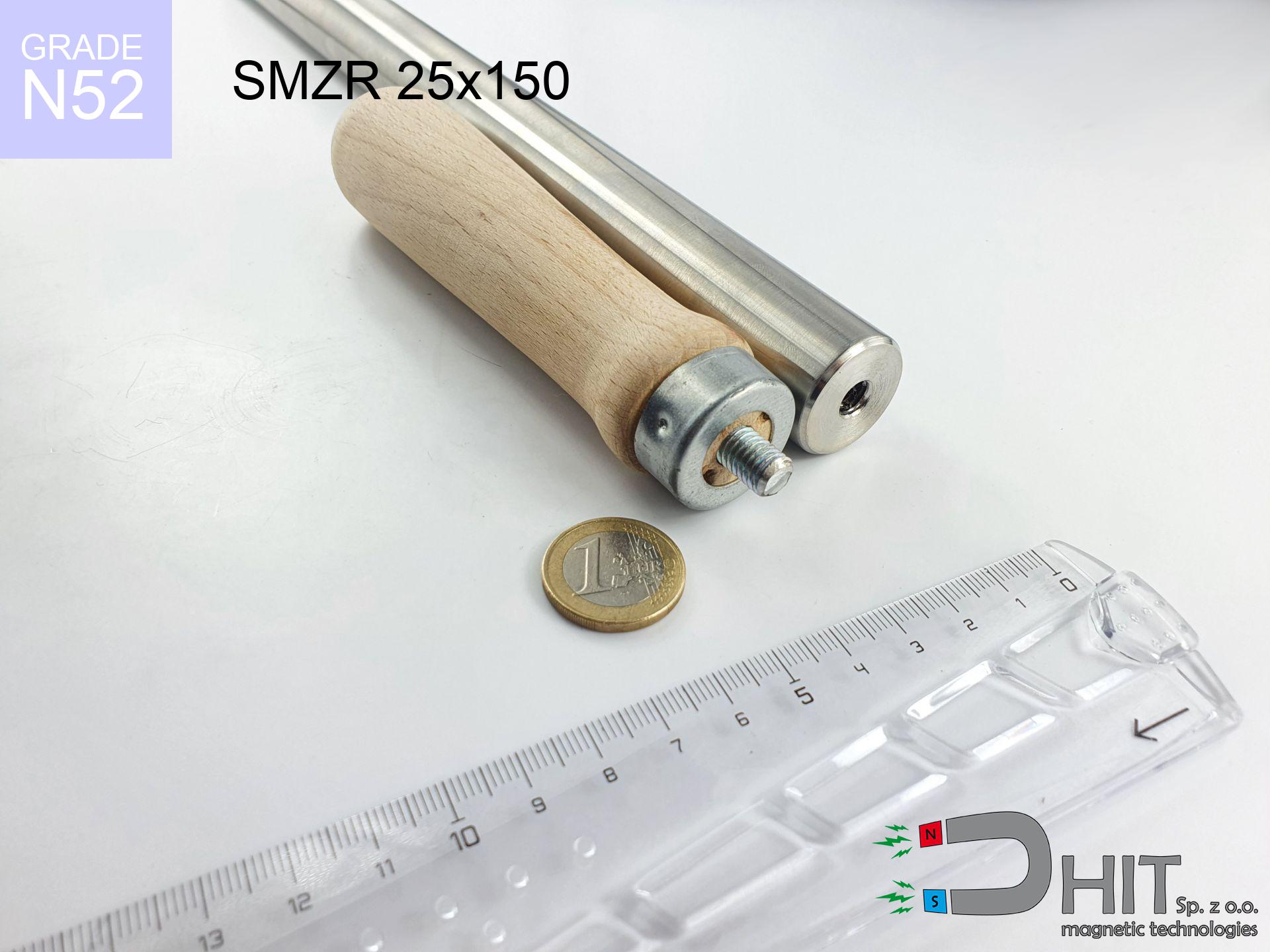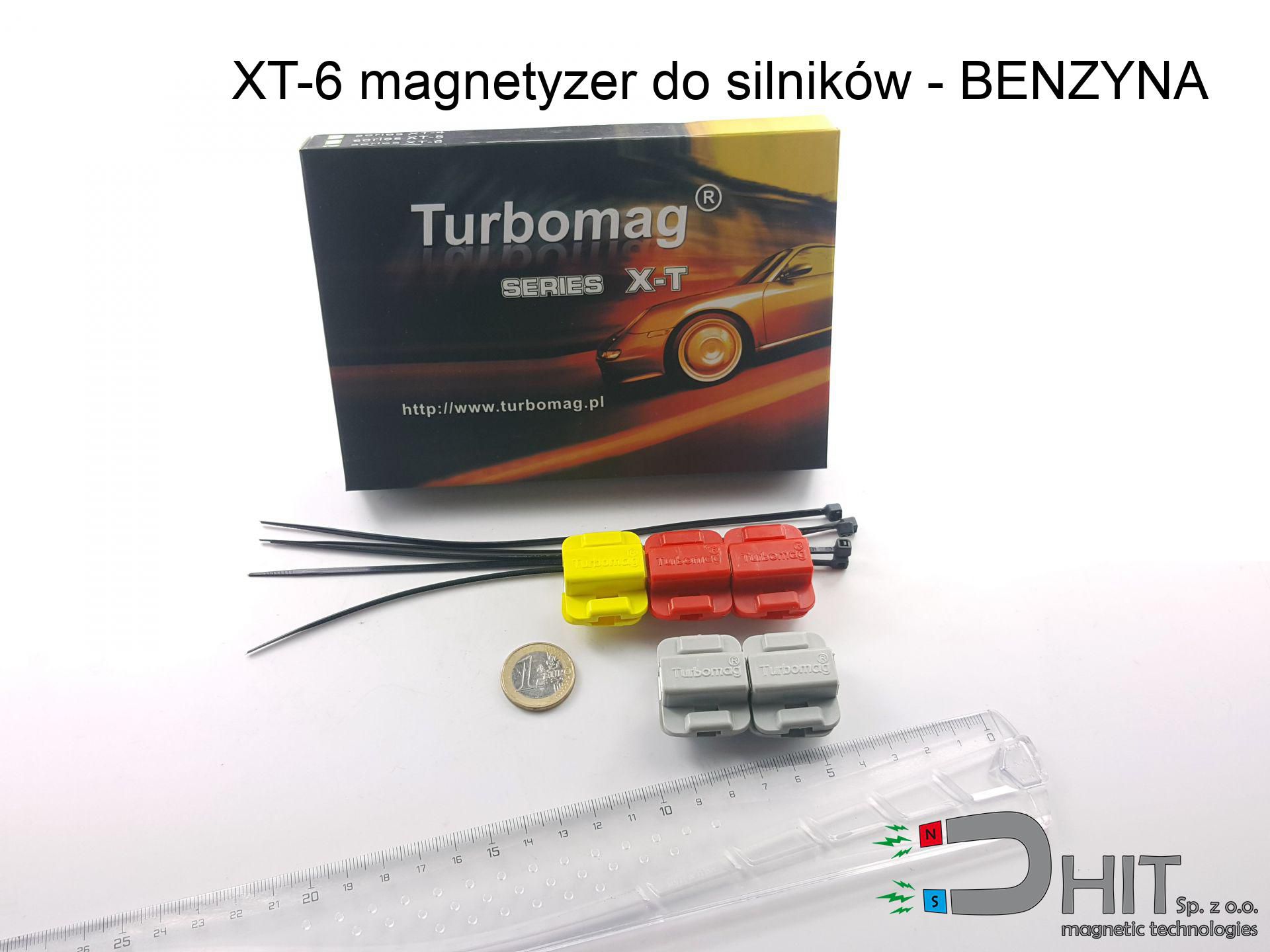MP 5x1.5x3 / N38 - neodymium magnet
ring magnet
catalog number 030451
GTIN: 5906301812357
external diameter Ø
5
mm [±0,1 mm]
internal diameter Ø
1.5
mm [±0,1 mm]
height
3
mm [±0,1 mm]
magnetizing direction
↑ axial
capacity ~
0.56 kg / 5.49 N
magnetic induction ~
121.27 mT / 1,213 Gs
max. temperature
≤ 80
°C
catalog number 030451
GTIN: 5906301812357
external diameter Ø
5 mm [±0,1 mm]
internal diameter Ø
1.5 mm [±0,1 mm]
height
3 mm [±0,1 mm]
magnetizing direction
↑ axial
capacity ~
0.56 kg / 5.49 N
magnetic induction ~
121.27 mT / 1,213 Gs
max. temperature
≤ 80 °C
0.34 ZŁ gross price (including VAT) / pcs +
0.28 ZŁ net price + 23% VAT / pcs
bulk discounts:
need more quantity?Do you have difficulties in choosing?
Give us a call tel: +48 888 99 98 98 or get in touch via form on the contact page. You can check the lifting capacity and the shape of neodymium magnets in our force calculator magnetic mass calculator
Orders placed by 2:00 PM will be shipped on the same business day.
Specification: ring magnet 5x1.5x3 / N38 ↑ axial
Magnetic properties of the material N38
Physical properties of sintered neodymium magnets Nd2Fe14B
Product suggestions
Advantages and disadvantages of neodymium magnets NdFeB.
In addition to immense power, neodymium magnets have the following advantages:
- They do not lose power over time. After approximately 10 years, their power decreases by only ~1% (theoretically),
- They are highly resistant to demagnetization by external magnetic sources,
- In other words, thanks to the shiny coating of nickel, gold, or silver, the element acquires an aesthetic appearance,
- They exhibit extremely high magnetic induction on the surface of the magnet,
- By using an appropriate combination of materials, they can achieve significant thermal resistance, allowing them to operate at temperatures up to 230°C and above...
- Thanks to the flexibility in shaping and the ability to adapt to specific requirements – neodymium magnets can be produced in various forms and dimensions, which amplifies their universality in usage.
- Key role in advanced technologically fields – are utilized in computer drives, electric motors, medical apparatus and very modern machines.
Disadvantages of neodymium magnets:
- They are prone to breaking as they are fragile when subjected to a powerful impact. If the magnets are exposed to impacts, it is suggested using magnets in a metal holder. The steel housing in the form of a holder protects the magnet from impacts and simultaneously increases its overall strength,
- High temperatures can reduce the power of neodymium magnets. Typically, after heating above 80°C, most of them experience a permanent reduction in strength (although it is dependent on the shape and size). To prevent this, we offer special magnets marked with the symbol [AH], which are highly resistant to high temperatures. They can operate even at temperatures up to 230°C, making them an ideal solution for applications requiring high-temperature operation,
- They rust in a humid environment - during outdoor use, we recommend using waterproof magnets, such as those made of rubber or plastic,
- Limited ability to create threads or complex shapes in the magnet - the use of a housing is recommended - magnetic holder
- Potential hazard associated with microscopic parts of magnets are risky, if swallowed, which is particularly important in the aspect of protecting young children. Additionally, small elements of these magnets have the potential to complicate diagnosis in case of swallowing.
Be Cautious with Neodymium Magnets
The magnet coating is made of nickel, so be cautious if you have an allergy.
Studies clearly indicate a small percentage of people who suffer from metal allergies such as nickel. An allergic reaction often manifests as skin redness and rash. If you have a nickel allergy, try wearing gloves or avoid direct contact with nickel-plated neodymium magnets.
It is important to maintain neodymium magnets away from children.
Remember that neodymium magnets are not toys. Do not allow children to play with them. Small magnets can pose a serious choking hazard. If multiple magnets are swallowed, they can attract to each other through the intestinal walls, causing significant injuries, and even death.
Never bring neodymium magnets close to a phone and GPS.
Magnetic fields interfere with compasses and magnetometers used in navigation for air and sea transport, as well as internal compasses of smartphones and GPS devices.
Keep neodymium magnets away from people with pacemakers.
Neodymium magnets generate strong magnetic fields. As a result, they interfere with the operation of a pacemaker. This is because many of these devices are equipped with a function that deactivates the device in a magnetic field.
Comparing neodymium magnets to ferrite magnets (found in speakers), they are 10 times stronger, and their power can shock you.
Familiarize yourself with our information to properly handle these magnets and avoid significant swellings to your body and prevent damage to the magnets.
Dust and powder from neodymium magnets are flammable.
Avoid drilling or mechanical processing of neodymium magnets. If the magnet is crushed into fine powder or dust, it becomes highly flammable.
Do not place neodymium magnets near a computer HDD, TV, and wallet.
Strong magnetic fields emitted by neodymium magnets can damage magnetic storage media such as floppy disks, credit cards, magnetic ID cards, cassette tapes, video tapes, or other devices. They can also damage televisions, VCRs, computer monitors, and CRT displays. Avoid placing neodymium magnets in close proximity to electronic devices.
Neodymium magnets are delicate as well as can easily break as well as shatter.
Neodymium magnets are delicate as well as will crack if allowed to collide with each other, even from a distance of a few centimeters. They are coated with a shiny nickel plating similar to steel, but they are not as hard. In the case of a collision between two magnets, there can be a scattering of small sharp metal fragments in different directions. Protecting your eyes is essential.
Neodymium magnets can become demagnetized at high temperatures.
Although magnets have shown to retain their effectiveness up to 80°C or 175°F, this temperature may vary depending on the type of material, shape, and intended use of the magnet.
Neodymium magnets can attract to each other, pinch the skin, and cause significant injuries.
Magnets may crack or crumble with uncontrolled connecting to each other. Remember not to approach them to each other or have them firmly in hands at a distance less than 10 cm.
Please see the article - What danger lies in neodymium magnets? You will learn how to handle them properly.



![magnetic separator 32x125 [2xM8] / N52 magnetic separator 32x125 [2xM8] / N52](https://cdn3.dhit.pl/graphics/products/sm-32x125-2xm8-moj.jpg)




